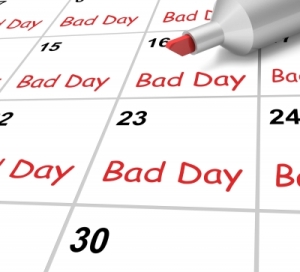A lengthy front-page Boston Globe article (Precarious future for primary care) includes some of the usual laments:
- The shortage of primary care physicians is bad and getting worse
- Primary care docs don’t make enough money compared to specialists
- Student loan burdens discourage a career in primary care
- Medical schools implicitly discourage the best students from going into primary care
There is some truth in the above, but the article misses other significant problems with primary care and fails to note factors that I think may lead to a resurgence of primary care over the next decade.
First, some more challenges specific to primary care:
- Increasing oversight and control through quality reporting requirements that fall most heavily on primary care
- The rise of non-physician primary care providers, i.e., nurse practitioners and physician assistants, which in some cases erodes the prestige of being a doctor
The article mentions how new doctors continue to go into more lucrative specialties instead. But if I were starting a medical career, I would look seriously at primary care.
In the traditional fee-for-service model, health systems viewed primary care physicians primarily as feeders for profitable specialties and diagnostic tests. A primary care physician who referred lots of patients to the hospital for MRIs, stress tests and hip replacements was a great thing.
In new value based models, primary care physicians are often taking control. They are starting to view specialists more as vendors, and are thinking twice before making referrals. In this new world, specialists have to demonstrate efficiency, responsiveness and effectiveness to earn referrals. Primary care physicians are climbing into the driver’s seat and finding opportunities to boost their incomes through performance based bonuses. It’s specialists who should be worried about what will happen to their flow of patients and their incomes.
Also, primary care physicians who don’t like the traditional practice set-up can become concierge physicians, boosting their incomes and autonomy in the process. There’s plenty of demand for such services in places like Boston. When I looked into getting a concierge physician for myself the offices either didn’t return my calls or replied that they were not taking new patients.
Read the article carefully and you’ll see that there are also opportunities for primary care to improve through more enlightened practice administration. Scheduling is a prime example. In one place we are told that there is such a shortage of primary care that “they’re filled to the brim with appointments.” But we also read:
Dr. Danielle Silwa… was at her computer… staring at a roster of her patients, most of them no-shows… ‘Sometimes you have days where half your [schedule] doesn’t show up.’
So why are the appointment slots all taken but only half the patients show up? Well, when someone calls for an appointment and is told to wait a month or two, by the time the appointment rolls around they are either dead, or the problem has been resolved, or they’ve forgotten about the visit. There are solutions to this common problem. Open access scheduling, where slots are intentionally left open for same or next-day appointments, has the unintuitive impact of increasing capacity utilization while increasing patient satisfaction. And digital appointments such as video visits and asynchronous encounters can be used to take up the slack when no-shows do occur.
Meanwhile, primary care practices can optimize their use of NPs and PAs, leaving the doctors to work with the more complex patients, and not be stuck just with the more mundane and lower skilled functions mentioned in the article: “act as gatekeepers, watch for signs of decline, push for healthy habits.”
There’s a real need for primary care physicians. In the long run I expect primary to become a more attractive career path, while some specialties will become less enticing. It will take a while for the changes to work their way through the system, and there may be some hiccups and setbacks along the way. But I really don’t agree with the Globe’s angle on this topic.
Image courtesy of Stuart Miles at FreeDigitalPhotos.net
—
By healthcare business consultant David E. Williams, president of Health Business Group.
from Health Business Blog http://healthbusinessblog.com/2015/06/24/primary-care-prognosis-is-it-really-so-grim/
via A Health Business Blog

No comments:
Post a Comment